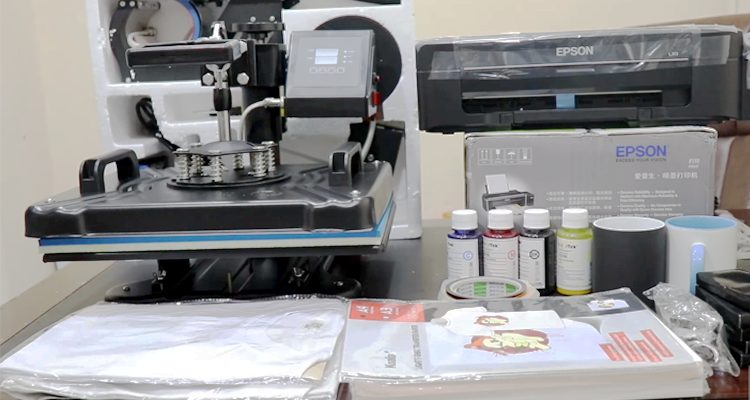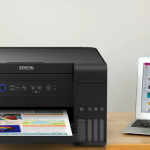One of the main supplies required to start a sublimation printing business is sublimation paper. It is available in the market with different names, like transfer paper, heat transfer paper, sublimation transfer paper, sublimation paper, and sublimation transfers.

Depending upon the qualities, uses and specifications there are multiple types of sublimation transfer papers. If you are new to sublimation, it is imperative to understand what is sublimation paper used for and how to use sublimation heat transfer paper. In this tutorial, I’ve discussed everything you need to know about heat transfer paper.
What Is Sublimation Paper Used For?
Table of Contents
- 1 What Is Sublimation Paper Used For?
- 1.1 What is a sublimation Paper?
- 1.2 Are Heat Transfer Paper and Sublimation Papers the Same?
- 1.3 Sublimation or Heat Transfer Papers for Light Colored Substrates
- 1.4 Sublimation Paper for Dark Colored Substrates
- 1.5 Heat Transfer Vinyl
- 1.6 Common Uses of Sublimation Papers
- 1.7 Garment Printing
- 1.8 How to Use Sublimation Transfer Paper?
- 1.9 Faqs
- 1.10 Conclusion
Before diving deep into the uses of sublimation paper you may need to know:
What is a sublimation Paper?
Sublimation paper or heat transfer paper is a temporary or intermediate sublimation substrate. The print is transferred to this paper in the first stage. This is a special sheet with the ability to adhere to sublimation ink temporarily. Then this transfer paper is placed onto the permanent substrate like a t-shirt or mug and the heat is applied with pressure. The sublimation ink turns into the gaseous fumes and transfers to the main sublimation substrates permanently.
Are Heat Transfer Paper and Sublimation Papers the Same?
There is a small difference between heat transfer paper and sublimation paper. Sublimation paper is a type of heat transfer paper only used in sublimation printing. However, you can use heat transfer papers in multiple printing applications like laser, inkjet, or sublimation printing.
Since sublimation printing is so common these days you can find different types of sublimation papers. Every different type of sublimation paper is used for a different purpose in sublimation printing. So here are some common sublimation paper types and their uses:
Sublimation or Heat Transfer Papers for Light Colored Substrates
This is a transparent sheet that is used to transfer prints on white-colored or light-colored substrates. This type of sublimation paper is mainly used for garment printing like T-shirts, napkins, and caps. To perform sublimation on this type of paper, you need to mirror the design or image first. It can be either done by overturning the printer setup or through a design editing application.
Sublimation Paper for Dark Colored Substrates
This type of paper is also known as white sublimation paper. These white-colored sheets are used to transfer the sublimation designs and images in dark colors like black and navy blue. Unlike transparent heat transfer papers, you do not need to reverse the object. The printed design on the white sheet is then transferred to the substrates through the heat transfer process. The non-printed area of the paper will appear white to highlight the colored part.
Heat Transfer Vinyl
Heat transfer vinyl or HTV is a special kind of heat transfer paper used in professional-grade sublimation projects. This is paper with adhesive backing. If you want to perform sublimation on the substrates with limited or no polyester content you can use an HTV. It is a synthetic polymer with an adhesive backing. The design is printed on HTV and then cut through a vinyl cutter. Finally, the HTV is applied onto the substrate through the adhesive at its back.
Common Uses of Sublimation Papers
Garment Printing
Garment printing is the most lucrative sub-niche of the sublimation printing business. T-shirts, jackets, and caps are decorated and personalized using various sublimation printing techniques. A-Sub sublimation paper is the best choice for garment printing. A-Sub paper features a professional grade thickness of around 130 GSM and also offers the best-in-class color transformation.
The paper is widely used in small sublimation businesses for its compatibility with all sublimation dyes and availability in a wide range of sizes. Another thing that I love about A-sub paper is that you can use it for low-polymer substrates. It offers stunning results without an additional polymer coat on low-polymer cotton substrates.
Mug Printing
Mug printing is one of the best sublimation ideas for its impressive market value and low-cost startup. For mug printing, I would recommend you buy PriterJack and TextPrint. These sublimation papers are competitively priced against their high-end features. PrinterJack sublimation papers have a wide range of small sizes making it easier for you to choose a size that is perfect for your design and substrates. Continue reading to know further about what is sublimation paper used for.
Decorative Items-Most Versatile Sublimation Paper
The most versatile sublimation paper that I’ve ever used is the DyeMaster sublimation paper. This heat transfer paper is available in a wide range of thicknesses between 120-150 GSM, making it suitable for multiple applications. Its ability to transform vibrant colors and rich details makes it perfect for commercial-grade applications. It features the lowest in-class drying time making it equally suitable for beginners and pros.
How to Use Sublimation Transfer Paper?
Knowing the right way to use a sublimation transfer paper is crucial to getting the best out of it. These papers are available in multiple thicknesses and sizes and if you want the best printing results you need to work out the paper that is perfectly in line with your project needs. Once you have got a high-quality sublimation paper follow these steps to use it in the dye sublimation process
Figure Out the Printable Side
The Biggest challenge you face while working with sublimation transfer paper is to figure out its printable side. There is a minor brightness difference between the two sides and it’s pretty hard to work out this difference in normal light conditions. Normally the brighter white side of a paper is its printable side. It is advised to follow the manufacturer’s instructions to figure out the printable side.
Take a Print
Load the sublimation paper into the printer. Sublimation printers have adjustable paper feed mechanisms and you can adjust them according to the size of transfer paper. Sublimation dyes do not dry up quickly and you must allow them to dry for at least 30 seconds.
Pressing On the Substrate
Lay down the sublimation transfer paper on the substrate with its printed side facing toward the printable surface of the substrate. You can use heat transfer tape to fix the paper on the substrate.
Applying Heat and Pressure
Apply the required heat and pressure with the heat transfer machine. Avoid applying excessive heat and pressure; carefully remove the paper once the print is transferred.
Faqs
Conclusion
I’m hopeful that after reading this post you will be able to understand what is sublimation paper used for and how it is used. These papers are available with different features making them suitable for different applications. If you are going to start a sublimation printing business, it is crucial to understand the difference between sublimation paper types and the right method to use them.





